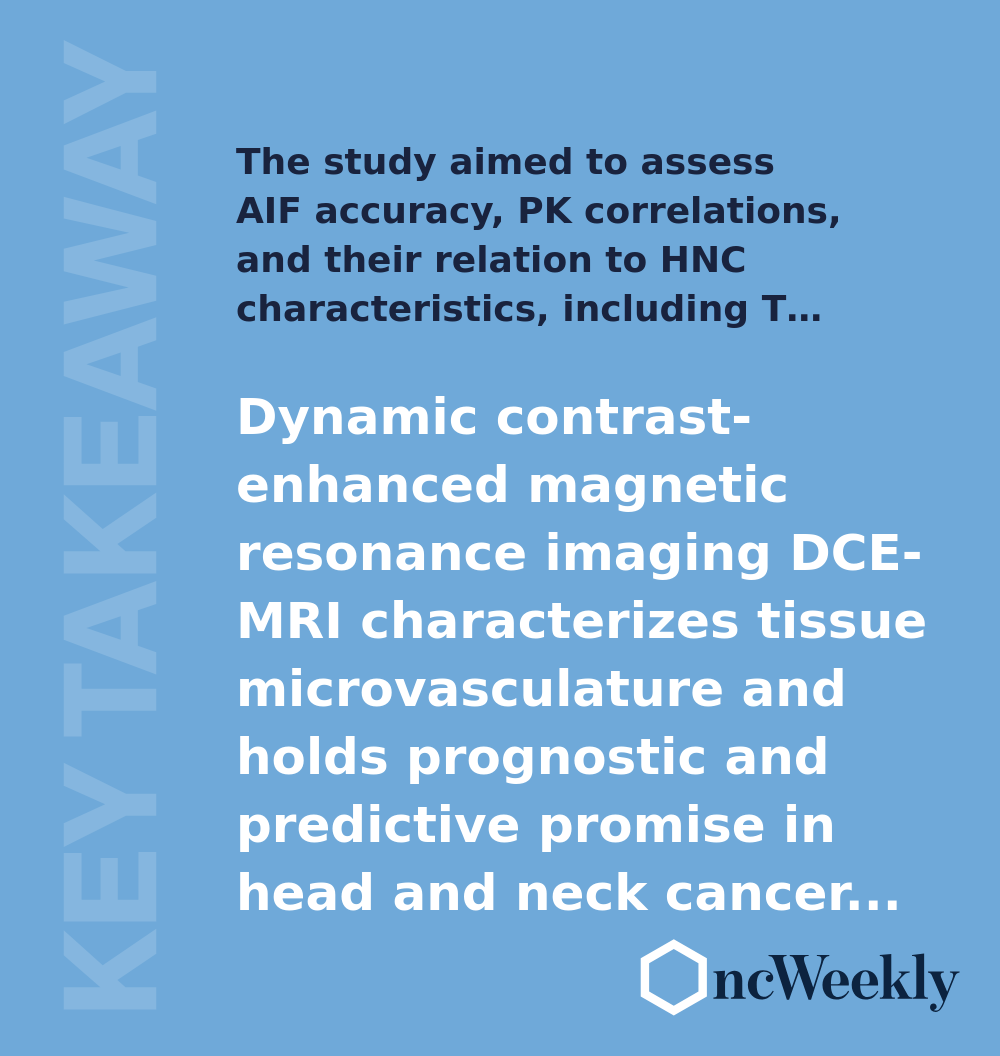KEY TAKEAWAYS
- The study aimed to assess AIF accuracy, PK correlations, and their relation to HNC characteristics, including T stage and HPV status.
- The results showed that utilizing individual AIF improved PK modeling accuracy in DCE-MRI. Lesion type, HPV status, and T staging influenced DCE-MRI parameters and correlations.
Dynamic contrast-enhanced magnetic resonance imaging (DCE-MRI) characterizes tissue microvasculature and holds prognostic and predictive promise in head and neck cancer (HNC) radiotherapy. Nevertheless, the absence of DCE-MRI standardization impedes study comparison and clinical integration.
Marte Kåstad Høiskar and her team spearheaded the study that aimed to assess the precision and reliability of the population arterial input function (AIF), examine the relationships between pharmacokinetic parameters, and explore their connections to T stage and human papillomavirus (HPV) status in HNC.
DCE-MRI scans were conducted on 44 patients with HNC. Population AIFs were computed using six different methods. Analysis involved primary and lymph node tumors utilizing Tofts model (TM) with both population and individual AIFs, extended TM (ETM) with individual AIFs, Brix model (BM), and calculation of areas under the curve (AUCs). Robustness and accuracy of population AIFs, correlations between DCE-MRI parameters, and their relationship to T stage and HPV status were assessed using intraclass correlation, concordance correlation, Pearson correlation, and Whitney Mann U test.
The population AIF demonstrated robustness but exhibited disparities compared to individual AIFs. Significant correlations were observed between KtransTM/ETM and ve, TM/ETM, and KtransTM/ETM and Kep, TM/ETM. ABrix and AUCs showed correlation in lymph nodes. In primary tumors, Kep, Brix correlated with ABrix, KtransTM/ETM and Kep, TM/ETM for primary tumors. Notably, Kep, , TM exhibited a significant decrease with increasing T stage. Both correlations and the association of parameters with T stage were more pronounced for HPV-negative lesions.
The results showed that utilizing an individual AIF was deemed superior for precise pharmacokinetic modeling via DCE-MRI. The parameters and their correlations were notably influenced by lesion type, HPV status, and T staging.
Source: https://pubmed.ncbi.nlm.nih.gov/38380153/
Kåstad Høiskar M, Sæther O, Alsaker MD, et al. (2024) ‘’Quantitative dynamic contrast-enhanced magnetic resonance imaging in head and neck cancer: A systematic comparison of different modelling approaches.’’ https://doi.org/10.1016/j.phro.2024.100548.













